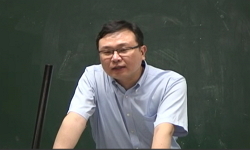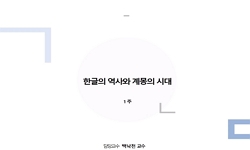본 논문은 번역의 과정에서 드러나는 언어 문화적 차이가 영어와 한국어, 영미 문학과 한국 문학 사이에 깊이 존재함을 밝히고 있다. 필자는 실용 영어와 영미 문학이 지닌 서양 문화의 전통...
http://chineseinput.net/에서 pinyin(병음)방식으로 중국어를 변환할 수 있습니다.
변환된 중국어를 복사하여 사용하시면 됩니다.
- 中文 을 입력하시려면 zhongwen을 입력하시고 space를누르시면됩니다.
- 北京 을 입력하시려면 beijing을 입력하시고 space를 누르시면 됩니다.

문화 : 번역을 통해서 들여다 본 동,서양문화의 비교 연구 = Culture : A Comparative Study on the East-West Culture through Translation
한글로보기https://www.riss.kr/link?id=A100000799
- 저자
- 발행기관
- 학술지명
- 권호사항
-
발행연도
2014
-
작성언어
Korean
-
주제어
번역 ; 언어 문화적 차이 ; 창의적 번역 ; 의사소통 ; 의식 ; 한글 ; 한류 ; translation ; sociolinguistic differences ; creative translation ; communication ; consciousness ; Hangeul ; Hallryu[the Korean Wave
-
등재정보
KCI등재
-
자료형태
학술저널
- 발행기관 URL
-
수록면
274-321(48쪽)
- 제공처
-
0
상세조회 -
0
다운로드
부가정보
국문 초록 (Abstract)
본 논문은 번역의 과정에서 드러나는 언어 문화적 차이가 영어와 한국어, 영미 문학과 한국 문학 사이에 깊이 존재함을 밝히고 있다. 필자는 실용 영어와 영미 문학이 지닌 서양 문화의 전통과 규범에는 어떤 특색이 있으며, 이는 한글과 한국 문학을 배우며, 또한 동시에 한자문화권에 속한 한국인들의 언어문화의 패턴과는 어떤 차이점을 지니는지에 대하여 분석한다. 무엇보다도 필자는 혼종의 시대를 살아가는 21세기 초의 문학인들이 창의적 번역을 통하여 동·서양 간의 문화 교류의 물꼬를 더욱 틀 수 있다는 신념에서 이 논문을 작성하게 된 것이다. 필자는 한글과 영어, 이를 매개로 한 한국 문학과 영미 문학 간의 의사소통의 차이와 문제점들이 한국인과 서구인의 언어 문화적 차이에서 비롯되었음을 밝히고, 이와 같은 의식(意識)이나 생활 구조상의 차이에 대한 접근과 이해를 통하여 이런 차이들을 극복하고 원활한 의사소통을 할 수 있음을 밝힌다. 그럼으로, 필자는 여러 실용 영어와 영미 문학의 한역(韓譯), 또한 그 정반대의 경우인, 한국어나 한국 문학의 영역(英譯)에서 각각 드러나는 언어 문화적 차이와 문학적 전통과 규범의 차이 등에 대하여 그 예를 들어 분석하고, 이에 따라 발생할 수 있는 의사소통 상의 여러 문제점들과 그 해결책을 모색한다. 필자는 영역과 한역의 쌍방향에 있어서, 언어 문화적 차이를 극복하고, 의사소통을 더욱 원활히 하기 위해서는 창의적 번역이 필요함을 몇 가지 예를 들어서 인정한다. 본 논문 전반에 걸쳐서, 필자는 한글과 한국 문학을 기반으로 한 세련된 문화의 발전을 위해서는 한민족(韓民族)의 정신사적 흐름이나 한글 발명과 관련된 언어문화 발전의 배경에 대한 지식과 함께 서구 영미 문화권에 대한 언어 문화적 이해 또한 중요함을 지적한다. 영어나 영미 문학을 통한 타 문화의 수용 시에도 이와 같은 언어 문화적 배경의 이해는 수반되어야 한다. 언어 문화적 접근과정에서, 필자는 한민족(韓民族) 신화와 사상(思想)의 원류(原流)와 헬레니즘이나 헤브라이즘 문화와의 비교 분석을 시도한다. 또한 필자는 한글의 발명과 그 고유한 언어 구성적 특색이 영어를 기반으로 한 영미 문학과의 근본적 차이를 설명한다. 필자는 또한 한류의 확산은 타 언어문화에 대한 깊이 있는 지식과 이해를 기반으로 하여야 하며, 번역 상의 체계성이나 질적 수준에 있어서의 향상을 통하여 더욱 점진적이고 긍정적인 효과를 창출하리라고 예견한다.
다국어 초록 (Multilingual Abstract)
This study puts emphasis upon the sociolinguistic differences in translation between the English and the Korean language, between the British & the American literature and the Korean literature. For the better communication through the proper translat...
This study puts emphasis upon the sociolinguistic differences in translation between the English and the Korean language, between the British & the American literature and the Korean literature. For the better communication through the proper translation, I investigate into the main features of the Western culture with its tradition and code in literature and in daily dialogue, as well, comparing with the language pattern of Koreans who learn and use Hangeul, the Korean alphabet, and simultaneously, living in the Far East which is within the Chinese cultural influence. In the early 21st century when it is in the era of hybridity, the literary circles should aim at creative translation which is, also, to be based upon the original text, as well. This study is made up with the conviction that the cultural exchange can be expanded through the creative translation by understanding the sociolinguistic backgrounds between the East and the West. In translating English into Korean, and in doing so conversely, there exist a variety of differences in the sociolinguistic backgrounds, literary tradition and its convention, and so forth, between the two languages. Thus, I pursue the possible way to solve the communicative problems that may happen in translating the sociolinguistically different languages. Consequently, I acknowledge the necessity of the creative translation in both Korean and English to overcome the differences in sociolinguistic background and to communicate better. Along with a deep understanding of the traditional Korean thoughts and its main stream, I also compare them with the thinking of Hellenism and of Hebraism. Through the understanding of the sociolinguistic differences inherent in English and Korean, per se, and by looking for the solution of the problems in translation, Hallryu, the Korean Wave, is expected to have more expansive, progressive, and positive effects.
동일학술지(권/호) 다른 논문
-
문학 : 성호(星湖) 이익(李瀷)의 기문(記文) 연구(硏究)
- 영산대학교 동양문화연구원
- 이병주 ( Byeong Ju Lee )
- 2014
- KCI등재
-
문화 : 베트남 전통 상례와 그 특징에 대한 고찰 -내재된 전통 관념을 중심으로-
- 영산대학교 동양문화연구원
- 김현재 ( Hyun Jae Kim )
- 2014
- KCI등재
-
특별 기고 : 박근혜 정부 학교 통일교육의 특징과 해결과제 -노무현,이명박 정부와의 비교를 중심으로-
- 영산대학교 동양문화연구원
- 김홍수 ( Hong Soo Kim )
- 2014
- KCI등재
-
- 영산대학교 동양문화연구원
- 영산대학교동양문화연구원
- 2014
- KCI등재




 KISS
KISS






